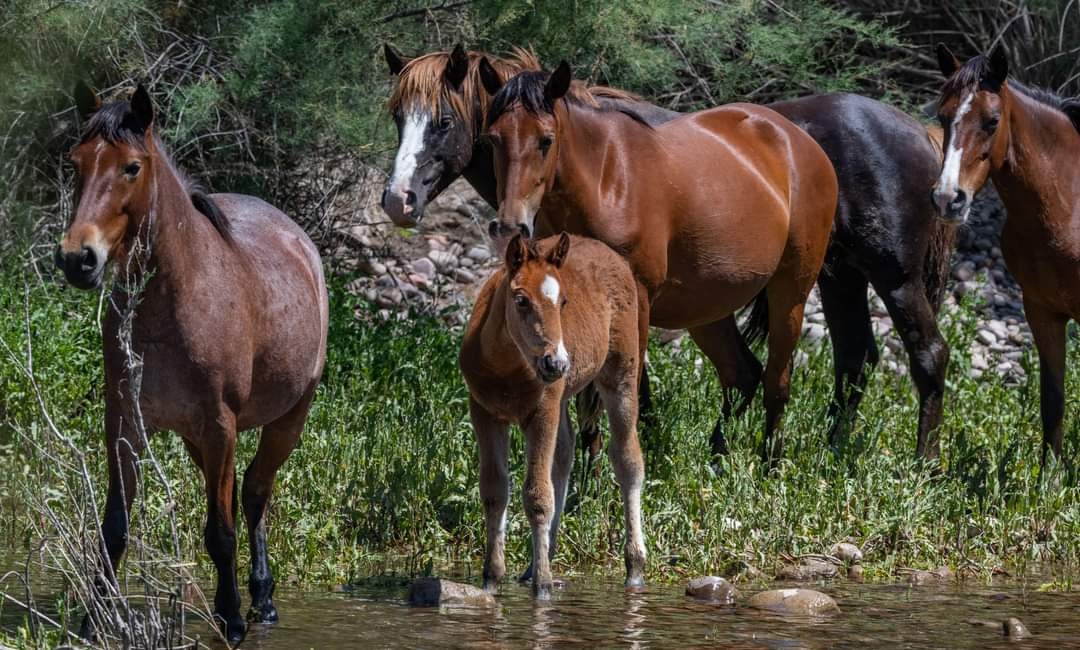
Let’s talk about the Tonto National Forest.
May 16th
Let’s talk about the Tonto National Forest and the decisions they’ve made, because after we join the CBD lawsuit we cannot talk about it anymore. We want you, the public, to understand the important details, because you have a stake in it, but never before were we able to tell you everything, because a lot of things were happening behind the scenes that we did not want to compromise.
( …I say “we”, because we are a group, but this is Simone. Hi, everyone 😉 )
If this gets too nerdy for you, and you’d rather watch awesome videos of the horses, that’s totally fine too, because our normal programming will resume right after this “simple as possible explanation of this wildly complicated issue”.
So, you all remember us sounding the alarm about the impending doom and the unprecedented outrage that followed and that you all helped with right?
Then after that there was the fighting and the promoting and the passing of the State bill to protect the Salt River wild horses in 2016. When Governor Ducey signed the bill in 2017, most of the public thought the horses were finally safe and we could all go back to just enjoying our time on the river. That was exactly 6 years ago this month, can you believe?
So after all that, the Tonto National Forest kind of got the point and organized the Salt River Horse Collaborative. The purpose was for different stakeholders to discuss a long term management plan for the horses. We thought that the deck was quite stacked against the horses and Robin Silver of CBD and John Koleszar (the smirking over dead horse guy), plus 7 different ranching interest groups were pretty much constantly pointing fingers and yelling at Simone. (Me, president of SRWHMG). Luckily, Steve Bloch with American Wild horse campaign was also there, willing to Bloch them at any point, lol. We both managed to stay polite throughout the entire process, which lasted a little over a year and cost the Forest Service just under a million dollars. (So probably 3 million in today’s value?)
But that torture was a way for the FS to give as many interests as possible a lot of input, into the long term management of the horses. We get it now why, because in the end, compromises were made by almost all parties and no one can say that they didn’t have input. We didn’t get everything we wanted, and neither did they, but we stood up for the horses like their lives depended on it, because they did. Even with a hostile Jackie Hughes as our Salt River horse Liaison, we survived. (Jackie now rounds up wild horses for a living)
Anyway, today, the long term management plan and the Inter-Governmental-Agreement (IGA) are very much consistent with the advise of this Salt River horse collaborative by:
- Aiming to reduce the herd to 100-200 animals over time.
- Removing the horses from the Butcher Jones area, the 4-peaks area, the Usery area and the Coon Bluff areas (burn area)
- Adding boundary fencing to prevent the herd from fanning out to other areas and to prevent reservation horses from coming in. They are now confined to their habitat of 20,000 acres.
- Water troughs were placed at the collaborative advise, so that horses are not relying on just the river and are spread out more evenly over the entire habitat. Deer and other wildlife are benefiting greatly from these as well.
- Through the confinement, the horses now only have access to 12 miles of the riparian area of the 200 mile long Salt River.
- The birth control program, which everyone in the collaborative agreed with, has already prevented the birth of 500 newborn horses and there has been an actual reduction of 54 horses through natural attrition so far.
Now most of these things were real compromises on our part, in order to keep the herd wild and free. However, on the part of the Forest Service it was legally very smart, because they now can prove that they have done, and are still doing everything in their power to protect the environment and are very successful in doing so.
The Tonto National Forest manages one of the most diverse forests visited by the most public, with every possible use and stakeholder fighting over it. But the TNF is years ahead of it’s time, by managing to balance it all responsibly as well as humanely.
When you come see this magical place, in all of it’s natural beauty, in spite of the 8 million visitors making a hell of a ruckus and a mess out of it, you’ll understand how hard that must be.
So please join us in thanking the Tonto National Forest and Forest Supervisor Neil Bosworth for the foresight, and telling them that we the public, will stand behind them all the way.
Sincerely, SRWHMG.
This is a picture of the ONLY foal in the TNF and his family band. His name is Splendor, but should we win this last battle for them, maybe we should name him Tonto!

